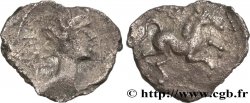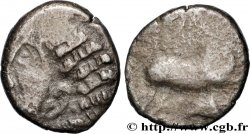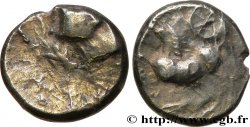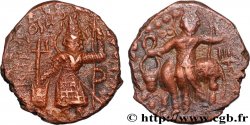Live auction - bga_823813 - GALLIA - ARVERNI (Area of Clermont-Ferrand) Statère d’or à la lyre et au fleuron, type CAS
You must signin and be an approved bidder to bid, LOGIN TO BID. Accounts are subject to approval and the approval process takes place within 48 hours. Do not wait until the day a sale closes to register. Clicking on "BID" constitutes acceptance of the terms of use of cgb.fr private live auctions.
Bids must be placed in whole Euro amounts only. The sale will start closing at the time stated on the item description; any bids received at the site after the closing time will not be executed. Transmission times may vary and bids could be rejected if you wait until the last second. For further information check the Live auction FAQ
All winning bids are subject to a 18% buyer’s fee.
All winning bids are subject to a 18% buyer’s fee.
| Estimate : | 9 000 € |
| Price : | 14 510 € |
| Maximum bid : | 14 510 € |
| End of the sale : | 06 June 2023 16:39:17 |
| bidders : | 8 bidders |
Type : Statère d’or à la lyre et au fleuron, type CAS
Date: c. 60 AC.
Metal : gold
Diameter : 17,5 mm
Orientation dies : 12 h.
Weight : 7,34 g.
Rarity : R3
Coments on the condition:
Très bel exemplaire sur un flan épais, de forme ovale, éclaté par endroit. Jolie tête au droit, d’un très beau style. Magnifique revers bien venu à la frappe, la tête du cheval n’est pas visible
Catalogue references :
Predigree :
Monnaie provenant de la collection André Libaud
Avec son certificat d'exportation de bien culturel n°225117 délivré par le ministère français de la Culture
Obverse
Obverse legend : CA-S.
Obverse description : Tête masculine, jeune, imberbe à gauche, les cheveux courts.
Reverse
Reverse legend : ANÉPIGRAPHE.
Reverse description : Cheval bondissant à gauche ; une lyre au-dessus de la croupe ; fleuron sous le poitrail.
Commentary
Exemplaire d’une qualité exceptionnelle avec la légende complète au droit. CAS a été interprété par de Saulcy comme étant le nom abrégé de CASTILLUS, chef gaulois, père de Vercingetorix (BG, VII, 4).
A example of exceptional quality with the full legend on the obverse. CAS was interpreted by de Saulcy as the abbreviated name of CASTILLUS, Gallic chieftain, father of Vercingetorix (BG, VII, 4)
A example of exceptional quality with the full legend on the obverse. CAS was interpreted by de Saulcy as the abbreviated name of CASTILLUS, Gallic chieftain, father of Vercingetorix (BG, VII, 4)







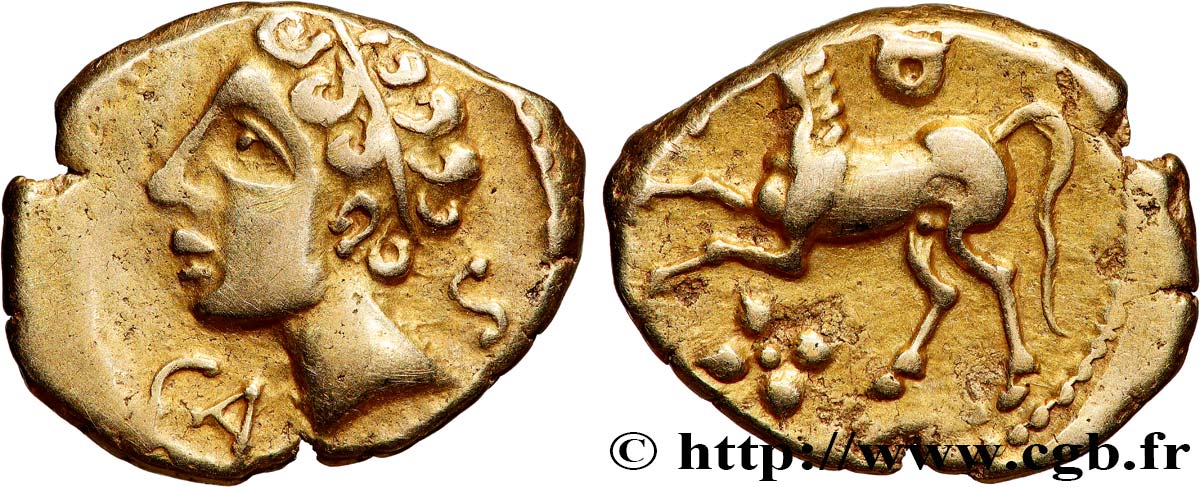
 Report a mistake
Report a mistake Print the page
Print the page Share my selection
Share my selection Ask a question
Ask a question Consign / sell
Consign / sell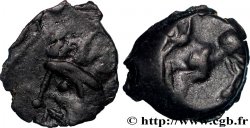
 Full data
Full data

